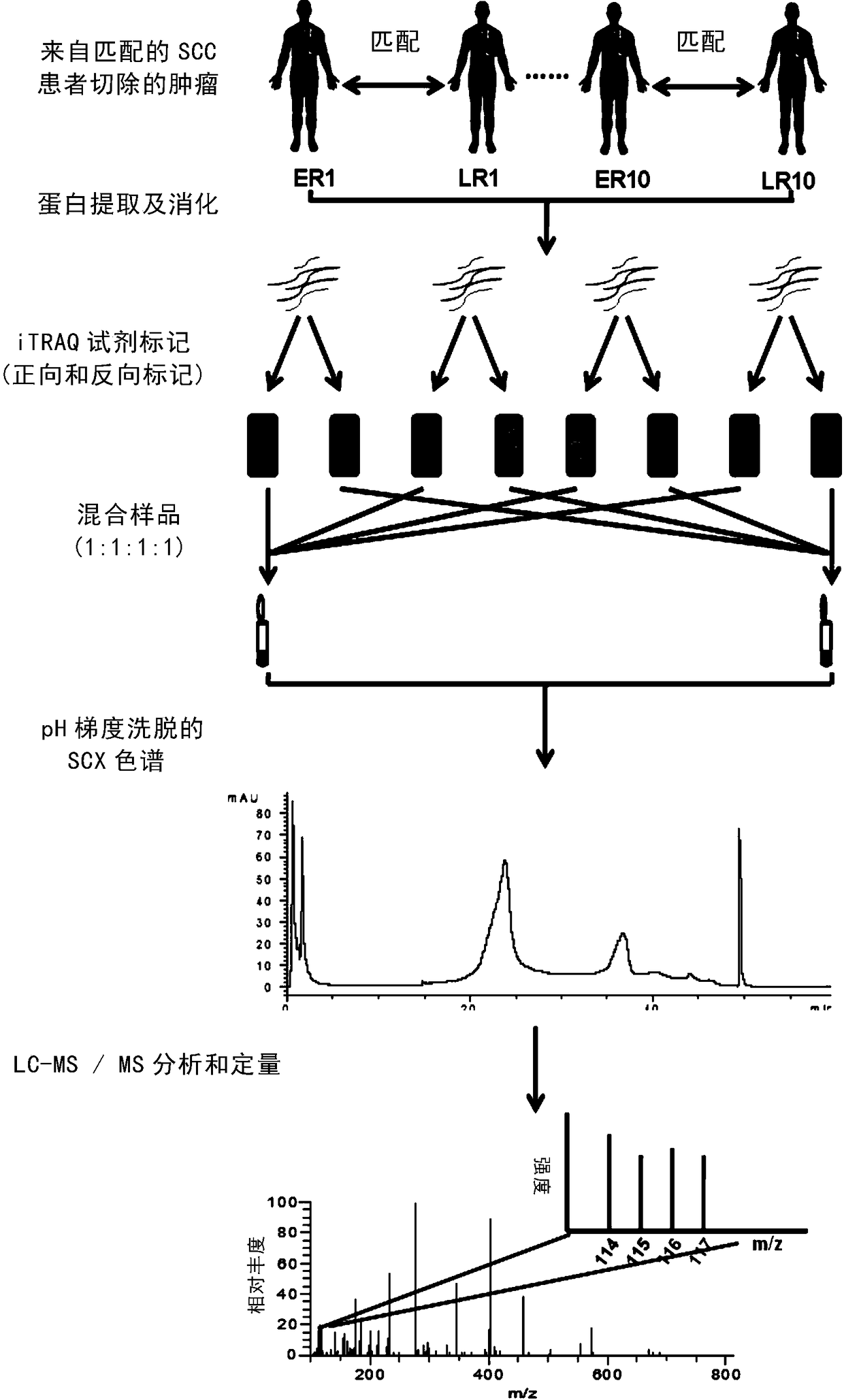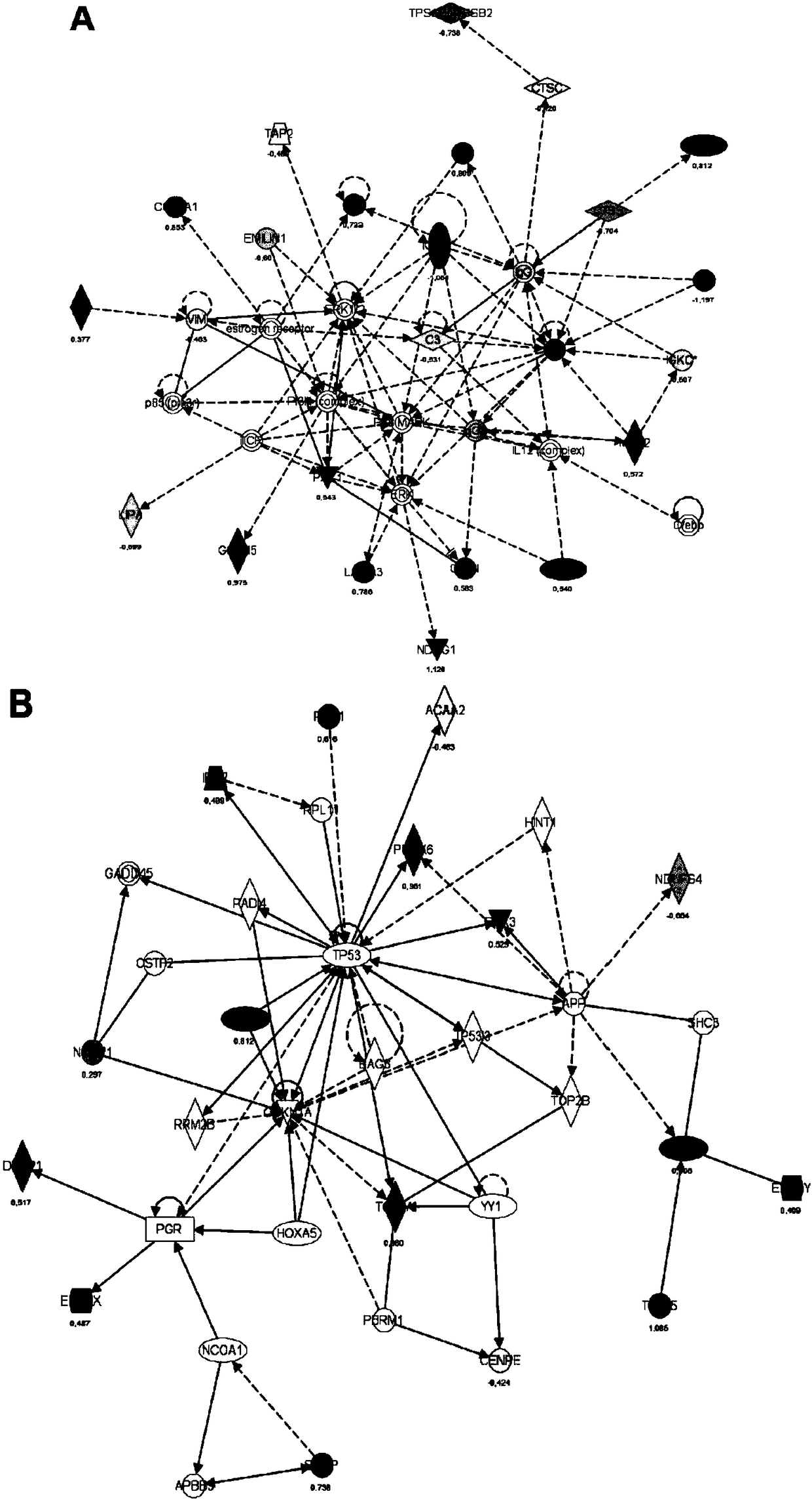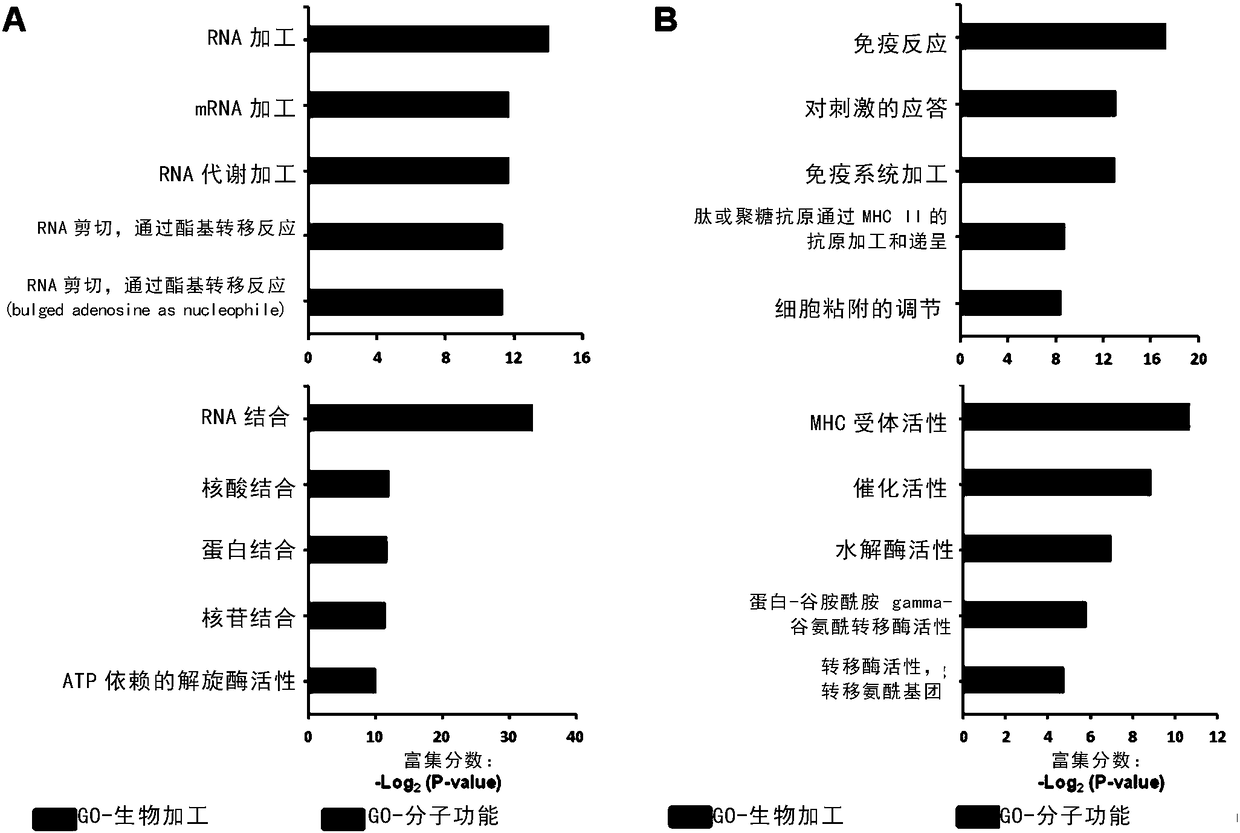Markers and diagnostic reagents for the diagnosis or prognosis of lung cancer
A technology for diagnostic reagents and prognosis, applied in the field of diagnostic markers, can solve the problems of time-consuming LCM, complex sample preparation steps, and a large number of sample materials.
- Summary
- Abstract
- Description
- Claims
- Application Information
AI Technical Summary
Problems solved by technology
Method used
Image
Examples
Embodiment 1
[0088] Example 1. Identification of differentially expressed proteins associated with early recurrence of SCC using iTRAQ-based 2D LC-MS / MS
[0089] In order to identify proteins associated with the prognosis of SCC patients, the inventors compared the expression of proteins in primary SCC tumor tissues from patients with early recurrence (ER, within 10 months) and patients with late recurrence (LR, >30 months) after surgery. differential expression. Twenty paired (according to patients' similar clinicopathological characteristics, including sex, smoking history, age, and TNM status) SCC tumor samples were subjected to iTRAQ marker quantitative proteomic analysis. The inventors identified a total of 4194 proteins (FDR Figure 7 . 136 proteins (72 up-regulated and 64 down-regulated proteins) showed significant differential expression between ER and LR (>1.5-fold difference in expression level in at least 4 paired samples, p-value figure 1 shown.
Embodiment 2
[0090] Example 2, Bioinformatics Analysis and Comprehensive Literature Survey of Differentially Expressed Proteins
[0091] In order to study the biological functions of the identified differentially expressed proteins, the inventors performed protein network analysis and Gene Ontology (GO) analysis. Network analysis of 136 significantly altered proteins was performed using IPA software. Such as figure 2 (A-B), The top 2 disease and functional networks identified by IPA analysis are "Cell Motility, Inflammatory Response, Hair and Skin Development and Function" (Score = 43) and "Cancer, Blood Disease, Cell Development" (Score = 26) . The results showed that the significantly altered proteins in ER and LR patients were closely related to cell motility and cancer network. GO analysis was performed on up-regulated and down-regulated proteins, respectively, using DAVIDBioinformatics resource 6.7. The top five GO terms identified in GO as image 3 shown. GO analysis revealed ...
Embodiment 3
[0096] Example 3, the correlation between the expression of DDX56 and the survival period of lung cancer patients
[0097] To further evaluate the correlation between DDX56 and the upregulated proteins in the top 10 ER groups and the overall survival rate of cancer patients, the inventors used two online survival analysis software: SurvExpress and KMplot.
[0098] SurvExpress survival analysis is based on a microarray data set of 130 SCC patients that has been published. The inventors analyzed DDX56 alone and also showed that the high gene expression level of DDX56 was significantly related to the poor prognosis of SCC patients (hazard ratio=1.74, logrank P value=0.0261 ; Figure 4 , A).
[0099] Next, the present inventors used KMplot to further investigate the correlation between DDX56 and cancer prognosis in various cancer types. The KMplot background database included 2,437 lung adenocarcinoma patients with mean follow-ups of 69, 40, 49, and 33 months. The results showe...
PUM
 Login to View More
Login to View More Abstract
Description
Claims
Application Information
 Login to View More
Login to View More - R&D
- Intellectual Property
- Life Sciences
- Materials
- Tech Scout
- Unparalleled Data Quality
- Higher Quality Content
- 60% Fewer Hallucinations
Browse by: Latest US Patents, China's latest patents, Technical Efficacy Thesaurus, Application Domain, Technology Topic, Popular Technical Reports.
© 2025 PatSnap. All rights reserved.Legal|Privacy policy|Modern Slavery Act Transparency Statement|Sitemap|About US| Contact US: help@patsnap.com



